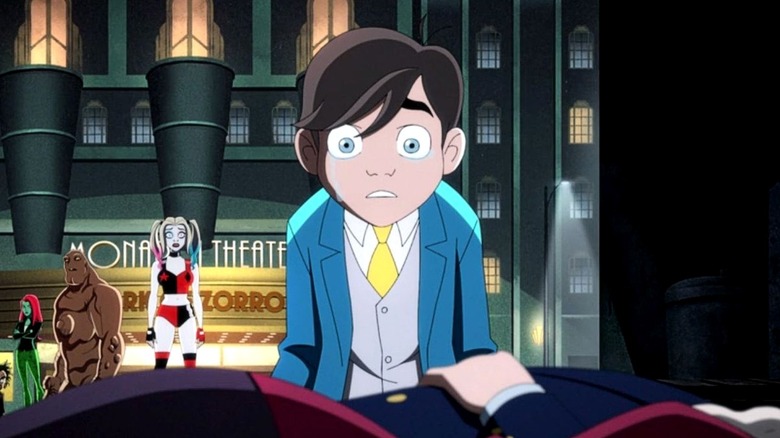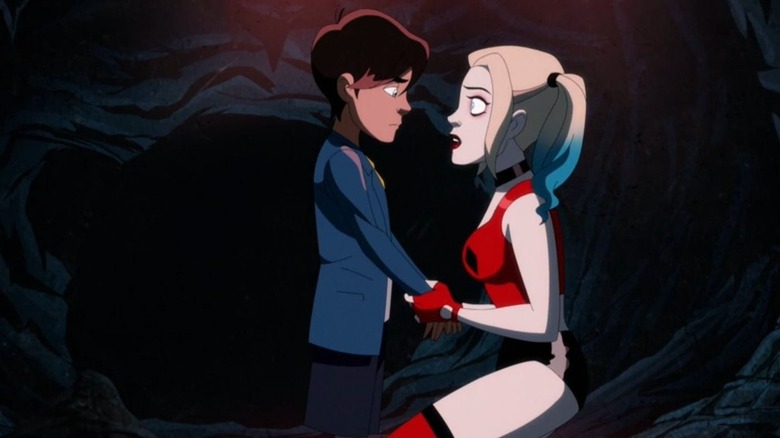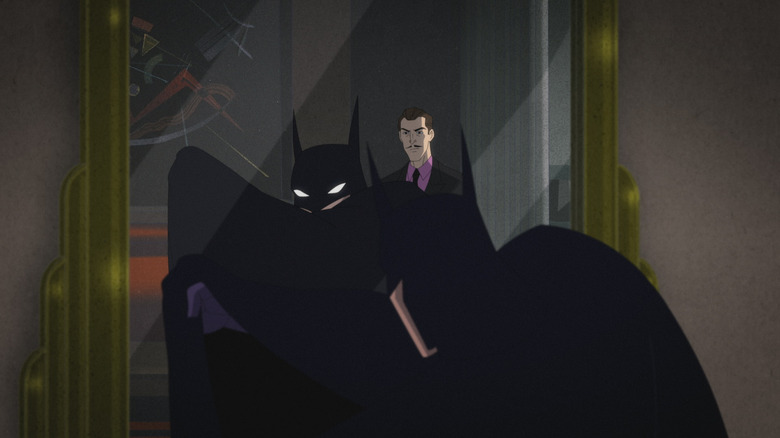Harley Quinn Season 3 Takes Batman To Places We've Never Seen Before
"Harley Quinn" has quickly become one of the most subversive and inventive superhero stories on TV. From the very beginning, the show took the rule of cool as its one and only commandment, playing with the DC canon, discarding everything that doesn't provide maximum laughs and changing/breaking/remixing/adapting the rest. This means killing several major Batman villains like Scarecrow, Mr. Freeze and The Penguin, but also turning Kite Man into a tragic nice guy, and Joker into a suburban step dad.
Season 3 of the show has punched things even further by bringing in the Bat family and making them truly dysfunctional — emo Nightwing, a very clingy Bruce Wayne — and then exploring a side of Batman we haven't seen since "Mask of the Phantasm."
Things started when, early in the season, Poison Ivy imbued her plant friend Frank with the power to resurrect the fauna under Gotham to terraform it. But someone kidnapped Frank because the plan could get in motion. That someone? Bruce Wayne. In the latest episode, "Batman Begins Forever," Harley has kidnapped Bruce and recruits the help of her former friend/supervillain/traitor Doctor Psycho to access the memories of the billionaire playboy. What they find instead is a very familiar scene: a young Bruce Wayne walking out of the theater with his parents, going into a dark alley before a mugger shoots Thomas and Martha dead.
It's a scene that has been recreated and memed to death, but just when you think there is nothing new or insightful left to do with the murder of the Waynes, along comes "Harley Quinn" to take Batman to all new places.
'Holy post-traumatic stress disorder, Batman!'
Indeed, it becomes very clear rather quickly that Bruce Wayne has repressed all of his memories except for witnessing his parents' murder. No matter how much they try, Harley and the others keep seeing Thomas and Martha walk into Crime Alley, followed by Joe Chill, and get shot over, and over, and over, and over, and over again until it almost stops being funny — almost.
It's a funny scene, but also a painful portrayal of Batman's psyche, as we see a young Bruce quite literally unable to escape or even move past the defining traumatic event of his life. The show takes this a step (or ten) further, making Harley finally address a longstanding meme about Batman needing therapy and offering her services to help young Bruce navigate his trauma in exchange for the location of Frank.
Except things aren't that easy, because no matter what memory they navigate, be it a parody of "Batman Begins," or one of "Batman Returns," or even one of the 1966 film, the memory always morphs into that fateful moment in Crime Alley. This culminates in a silly but poignant moment where Batman's projection of himself in a memory out of "Batman: The Animated Series" regresses into a child Bruce in an oversized adult Caped Crusader costume, showing the rawest representation of Batman we've ever seen: a literal traumatized child that hides his pain in a silly costume.
'My Bat-shaped cross to bear'
Except this child is also being tormented from within, because the Joe Chill we've seen infiltrate all of Bruce's memories is but a projection from adult Bruce. Turns out, Bruce has been forcing his younger self to relive the worst night of his life over and over again as a sick penance, because he blames himself for making his parents walk down Crime Alley rather than take a limo.
"Everything I do as Batman is to make that one night right, so I must never forget," Bruce tells Harley and his younger self. "This is my penance. My Bat-shaped cross to bear."
In one single moment, "Harley Quinn" does more to get at the heart of Batman's pain (and also what makes him so stupidly obnoxious) than most live-action projects. It is a moment that could only be brought to life in the absurdist, cartoonish world of "Harley Quinn," a world that morphs canon and the laws of the DC universe at will because it is so attuned to the essence of this universe that it can create fresh new takes on iconic characters and make them make complete sense.
For further proof of this, look no further than Joker's storyline this season. It involves the Clown Prince of Crime becoming a mayoral candidate with a socialist agenda that is quite compelling — by comparison, when Harley discovers Batman's secret identity and asks if he cannot just pay for affordable housing, Bruce asks if people pay for housing. But that's a story for another time.


